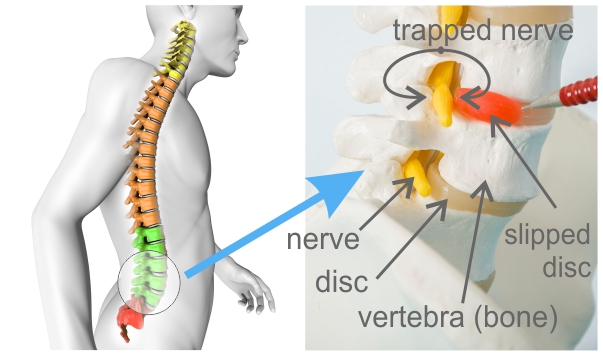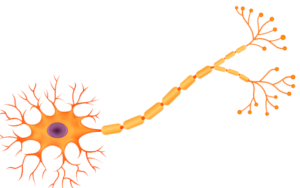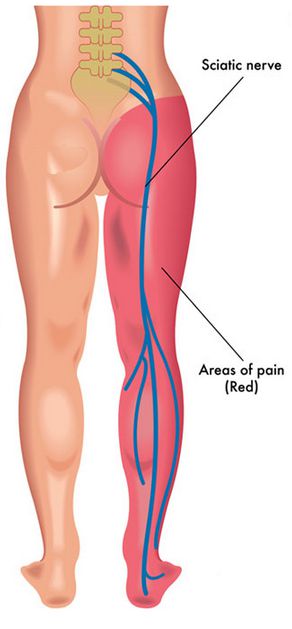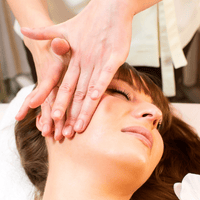Slipped Disc, Sciatica and Trapped Nerve Explained
Updated April 2023
Sciatica
The Sciatic nerve is as big as your own index finger. There are a number of ways this nerve can get trapped. A common cause is a slipped disc. This pinches the sciatic nerve as it tries to leave the spine, see below
 Depending on which part of the sciatic nerve is trapped, it will determine what symptoms a person would feel. Sciatica symptoms can pain in the buttock, back of the thigh and calf, the outside of the lower leg and the foot.
Depending on which part of the sciatic nerve is trapped, it will determine what symptoms a person would feel. Sciatica symptoms can pain in the buttock, back of the thigh and calf, the outside of the lower leg and the foot.
Slipped Disc
Discs do not slip! When a disc is injured it oozes out jelly. This jelly can press on the nerve, ie a trapped nerve. Surprisingly when a disc gets injured it gives very little pain. A person may feel the disc “go” or “tear” with no symptoms. It's later when the inflammation and muscle tightening takes place that the pain comes. The discs also have a hard “ball bearing” inside them (called the Nucleus). Through bad posture etc this nucleus can get “pinged” directly into the injured region of the disc. Causing more pain.
Trapped Nerves

A nerve is generally made up of an inner and an outer core. The outer core carries sensations, such as pins and needles, numbness, even hold and cold. The inner core usually carries motor activity that makes a muscle move (contract). This is why when a nerve is first compressed we can get pins and needles, and if the pressure is increased it might eventually cause the muscle to stop working – ie foot drop or a weak leg.
Managing a Trapped Nerve
For more information please visit our Sciatica Explained web page
Step 1
- Reduce pressure on the nerve. This means avoid sitting and instead lie down as frequently as possible, to take the pressure off the nerve.
- Anti-inflammatory medicines may help. By reducing the inflammation inside the body, it also helps to take pressure off the nerve.
Step 2
- Lie/sleep on your back or the non-hurting side. Do not lie on your tummy or on the side which hurts
- Apply an cool-pack to the painful area (usually better not to use ice).
- Alternate lying with walking. In the early stages more lying than walking ie walk a bit but lie down before the pain comes back. If the pain comes straight away on standing or sitting seek professional help – it can be a warning sign.
- Avoid / reduce the amount of time you are sitting or standing in one go. No matter how tempting it is to sit, often this will hinder healing, even if you dont feel it does.
Step 3
- Reduce your activity for a few days and then begin to slowly work back up to your usual level.
- Avoid twisting your back or any heavy lifting for at least 6 weeks from when the pain first started.
- Avoid ALL forward bending from the hips – this includes sitting!
- Generally in 12 weeks you can resume exercising etc.
- Physical therapy, such as osteopathy is also an option that we whole heartedly recommended
Try these two exercises to help free your pain













